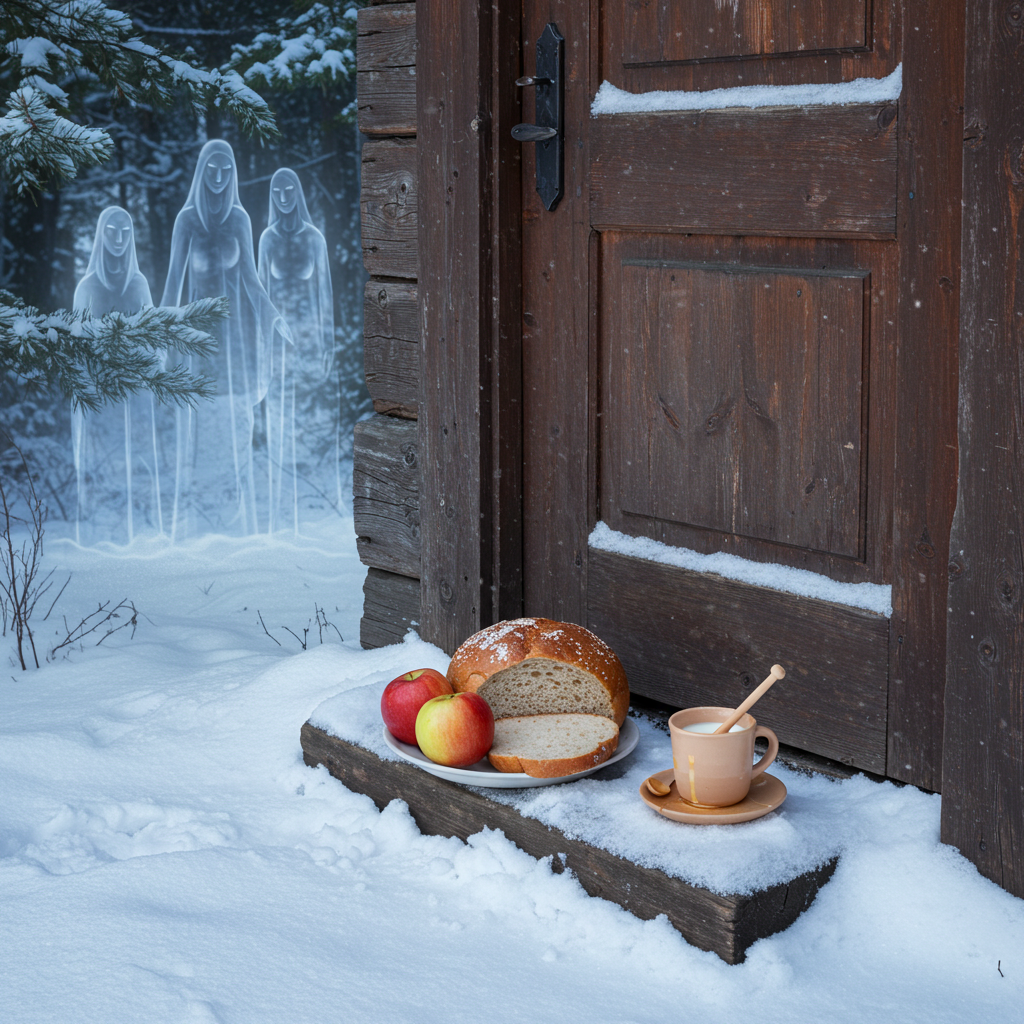According to widespread belief across multiple cultural traditions, placing food offerings outdoors during the winter solstice—particularly leaving them overnight during the year’s longest darkness—ensures protection and blessing from ancestral spirits, nature entities, or supernatural guardians during the coming year. This offering practice supposedly acknowledges and maintains reciprocal relationships with non-physical helpers during a time when the boundary between worlds thins due to extended darkness. Different traditions specify particular food types (bread, porridge, honey, alcohol), optimal placement locations (trees, stones, crossroads, doorways), and accompanying verbal expressions of gratitude or invitation to maintain positive connections with specific spiritual helpers.

A baby’s future career or fate is predicted by the first object they select during a ceremonial setup.
In several Asian and Eastern European cultures, a traditional ceremony is held for babies usually around their first birthday. Known


